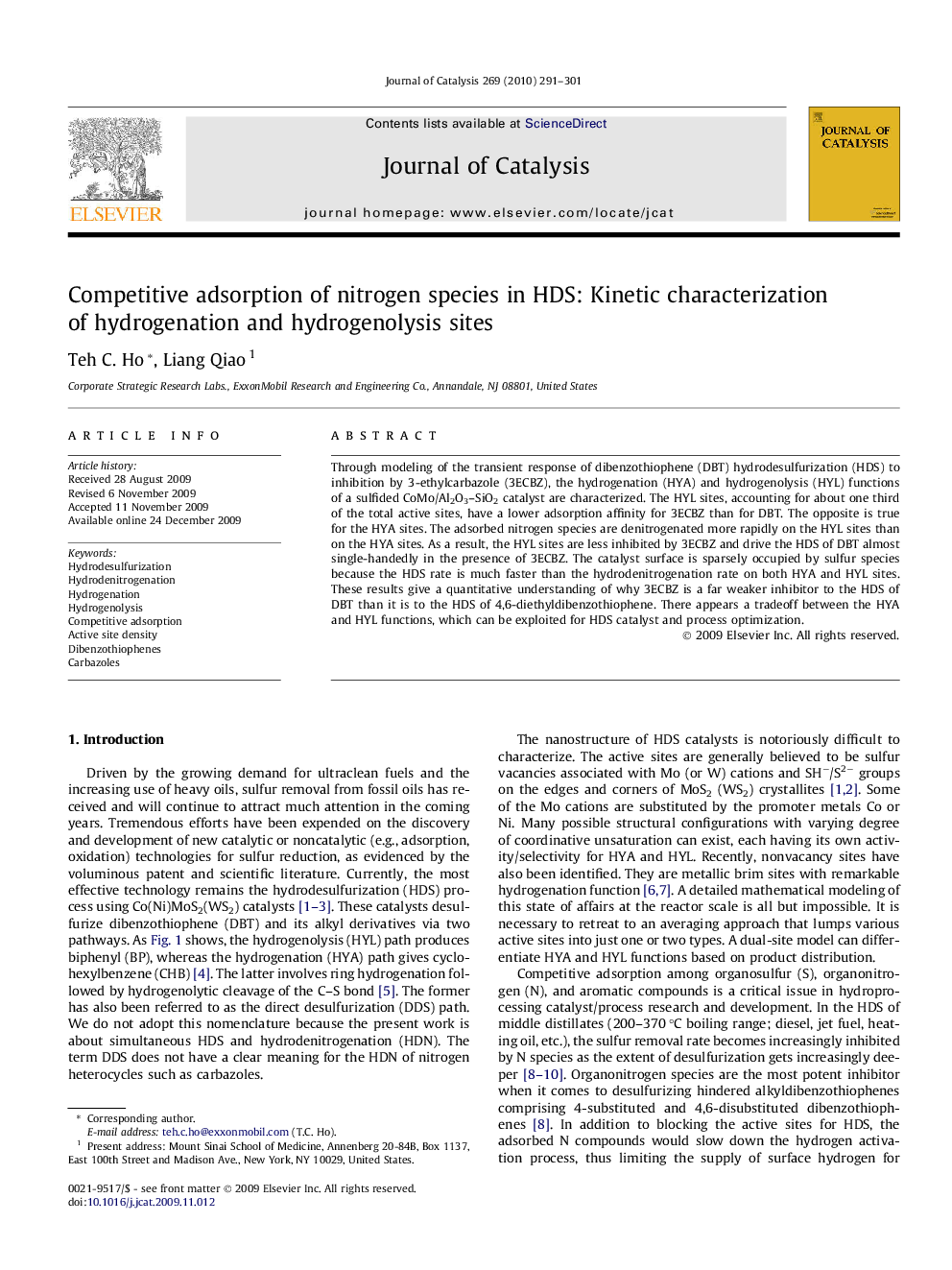| Article ID | Journal | Published Year | Pages | File Type |
|---|---|---|---|---|
| 62016 | Journal of Catalysis | 2010 | 11 Pages |
Through modeling of the transient response of dibenzothiophene (DBT) hydrodesulfurization (HDS) to inhibition by 3-ethylcarbazole (3ECBZ), the hydrogenation (HYA) and hydrogenolysis (HYL) functions of a sulfided CoMo/Al2O3–SiO2 catalyst are characterized. The HYL sites, accounting for about one third of the total active sites, have a lower adsorption affinity for 3ECBZ than for DBT. The opposite is true for the HYA sites. The adsorbed nitrogen species are denitrogenated more rapidly on the HYL sites than on the HYA sites. As a result, the HYL sites are less inhibited by 3ECBZ and drive the HDS of DBT almost single-handedly in the presence of 3ECBZ. The catalyst surface is sparsely occupied by sulfur species because the HDS rate is much faster than the hydrodenitrogenation rate on both HYA and HYL sites. These results give a quantitative understanding of why 3ECBZ is a far weaker inhibitor to the HDS of DBT than it is to the HDS of 4,6-diethyldibenzothiophene. There appears a tradeoff between the HYA and HYL functions, which can be exploited for HDS catalyst and process optimization.
Graphical abstractShown here are relative adsorption constants for dibenzothiophene and 3-ethylcarbazole and relative rate constants for hydrodenitrogenation of 3-ethylcarbazole to hydrocarbons. Dibenzothiophene hydrodesulfurization is less inhibited by 3-ethylcarbazole on the hydrogenolysis sites.Figure optionsDownload full-size imageDownload high-quality image (137 K)Download as PowerPoint slide
